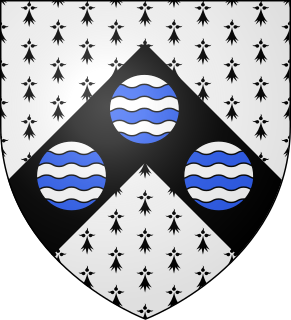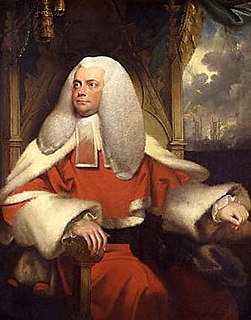
William Dalison (died 1546) of Laughton in the parish of Lindsey, Lincolnshire, was Sheriff of Lincolnshire in 1546 and Escheator of Lincolnshire.

William Dalison (died 1546) of Laughton in the parish of Lindsey, Lincolnshire, was Sheriff of Lincolnshire in 1546 and Escheator of Lincolnshire.
He was closely associated with the influential Sir William Tyrwhitt of Scotter, whose children and widow he was entrusted with caring for. His brother was Dr. Roger Dalison, Chanter of Lincoln Cathedral. [1]
He married Anne Wastneys, a daughter of George Wastneys of Haddon in Nottinghamshire, [1] by whom he had at least two sons and one daughter:

His re-used Gothic monument made circa 1405, in All Saints' Church, Laughton, Lincolnshire, is of a knight wearing the style of armour worn at the Battle of Agincourt (1415), with Gothic-style canopy, serving as ledger stone for the remains of William Dalison (died 1546), with inscription for Dalison made in imitation Gothic script below. William Dalison lived well into the Renaissance age in England when the taste for the Gothic style had long passed.[ citation needed ]
The Latin inscription is as follows:[ citation needed ]
Which may be translated as:

Baron Berners is a barony created by writ in the Peerage of England.

Baron Brownlow, of Belton in the County of Lincoln, is a title in the Peerage of Great Britain. It was created in 1776 for Sir Brownlow Cust, 4th Baronet. The Cust family descends from Richard Cust (1622-1700) of The Black Friars, Stamford, who represented Lincolnshire and Stamford in Parliament. In 1677 he was created a baronet, "of Stamford in the County of Lincoln". He was succeeded by his grandson Richard Cust, 2nd Baronet, who married Anne Brownlow, daughter of Sir William Brownlow, 4th Baronet, "of Humby", Lincolnshire, and sister and sole heiress of John Brownlow, 1st Viscount Tyrconnel, 5th Baronet of Belton House, Lincolnshire. The 2nd Baronet's son Sir John Cust, 3rd Baronet, sat as a Member of Parliament for Grantham and served as Speaker of the House of Commons from 1761 to 1770 and in 1754 inherited the Brownlow estates, including Belton, on the death of his childless maternal uncle Viscount Tyrconnel. His son Brownlow Cust, 4th Baronet represented Ilchester, Somerset, and Grantham in Parliament and in 1776 was raised to the peerage as Baron Brownlow, "of Belton in the County of Lincoln", chiefly in recognition of his father's services. He was succeeded by his son John Cust, 2nd Baron Brownlow who had sat as a Member of Parliament for Clitheroe, Lancashire, and also served as Lord Lieutenant of Lincolnshire for many years. In 1815 he was created Viscount Alford, "in the County of Lincoln" and Earl Brownlow both in the Peerage of the United Kingdom. In 1810 the future 1st Earl had married Sophia Hume, a daughter of Sir Abraham Hume, 2nd Baronet, of Wormleybury, by his wife Lady Amelia Egerton, a great-granddaughter of John Egerton, 3rd Earl of Bridgewater.
There have been two baronetcies created for people with the surname Heathcote, both in the Baronetage of Great Britain and both created in 1733. The holders of the first creation were later elevated to the peerage as Baron Aveland and Earl of Ancaster, which titles are now extinct. However, both baronetcies are extant as of 2008.
This is a list of High Sheriffs of Lincolnshire.
There have been three baronetcies created for persons with the surname Tyrwhitt, one in the Baronetage of England and two in the Baronetage of the United Kingdom.

Sir Francis Buller, 1st Baronet of Churston Court in the parish of Churston Ferrers, of nearby Lupton in the parish of Brixham, and of Prince Hall on Dartmoor, all in Devon, was an English judge.
There have been four baronetcies created for members of the Thorold family of Lincolnshire, two in the Baronetage of England and two in the Baronetage of Great Britain. As of 2014 one creation is extant.
The Chronicon Lusitanum or Lusitano is a chronicle of the history of Portugal from the earliest migrations of the Visigoths through the reign of Portugal's first king, Afonso Henriques (1139–85). The entries in the chronicle, ordered by year and dated by the Spanish Era, get increasingly longer and the majority of the text deals with the reign of Afonso. The conventional title of the chronicle means "Lusitanian chronicle" or "chronicle of the Goths". It was first given by the editor Enrique Flórez, who rejected the title under which it had previously been edited because of its subject matter. Flórez also claims that the manuscript of the Chronicon had previously been utilised by André de Resende, the first archaeologist of Portugal, and Manuel Severim de Faria, the first journalist of Portugal; it was also edited in the third volume of the Monarchia Lusitana by António Brandão (1632).

Sir George St Paul, 1st Baronet was an English politician.

The Pollard Baronetcy, of King's Nympton in the County of Devon, was a title in the Baronetage of England. It was created on 31 May 1627 for Lewis Pollard. The second Baronet sat as Member of Parliament for Bere Alston, Callington and Devon. The title became extinct on the death of the third Baronet in 1701.
The Dallison Baronetcy, of Greetwell in the County of Lincoln, was a title in the Baronetage of England. It was created in February 1644 for Robert Dallison, the son of Sir Charles Dallison, an officer in the Royalist Army during the Civil War. Sir Robert was himself a supporter of the Royalist cause. The title became extinct on the death of the fourth Baronet in circa 1720.

The Dalison Baronetcy, of Laughton in the County of Lincoln, was a title in the Baronetage of England. It was created on 29 June 1611 for Sir Roger Dalison, Lieutenant-General of the Ordnance, and Member of Parliament for Malmesbury. He purchased the baronetcy but was unable or unwilling to pay the price. He was also found to have embezzled large amounts of money from the Ordnance, and died in Fleet Prison as a debtor. After his death, a clerical error was discovered in the register of baronets, which meant that his surviving son, Thomas, could not automatically inherit the baronetcy. On 27 October 1624 it was recreated for Thomas Dalison. The title became extinct when Sir Thomas was killed at the Battle of Naseby in 1645.

Laughton is a village and a civil parish in the West Lindsey district of Lincolnshire, England. The population of the civil parish at the 2011 census was 410. It is situated approximately 6 miles (10 km) north from the town of Gainsborough

Sir William Dalison was an English judge who served as a Member of Parliament for Lincolnshire in 1553.

Sir Giles Strangways, of Melbury House, Melbury Sampford, and of Abbotsbury, both in Dorset, was an English politician.
Sir Robert Tyrwhitt, of Kettleby in Lincolnshire, was an English landowner, politician and administrator whose adherence to Roman Catholicism later led to imprisonment.

Sir Henry Carew, 7th Baronet (1779–1830) of Haccombe in Devon, was a member of the landed gentry of Devonshire.
Sir John Tyrwhitt, 5th Baronet, of Stainfield, Lincolnshire, was a British landowner and politician who sat in the House of Commons between 1715 and 1734.

Sir Roger Dalison, 1st Baronet, of Laughton, Lincolnshire was an English courtier, Lieutenant-General of the Ordnance and Member of Parliament.
Sir William Tyrwhitt, of Kettleby, Lincolnshire was an English courtier and Member of Parliament.